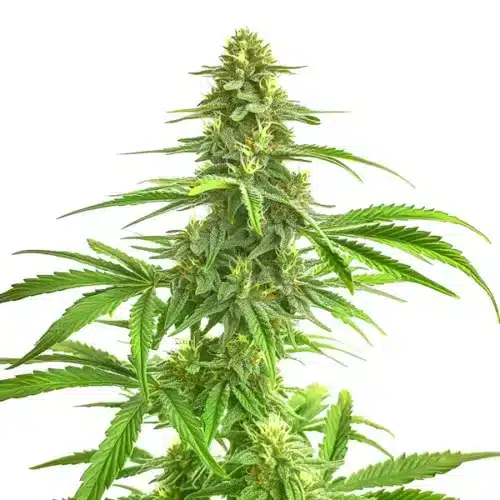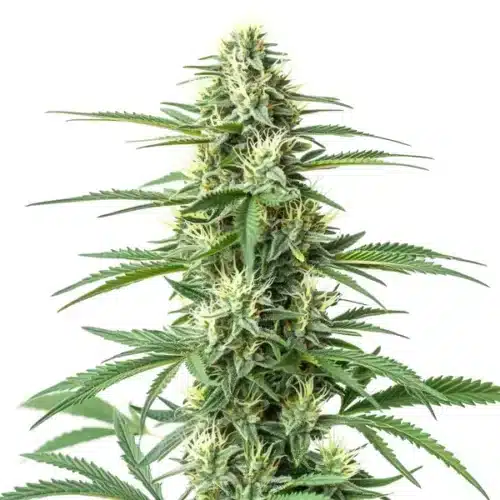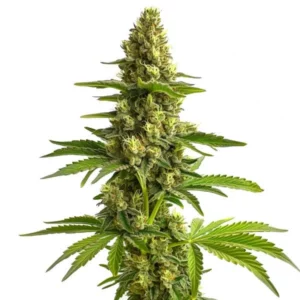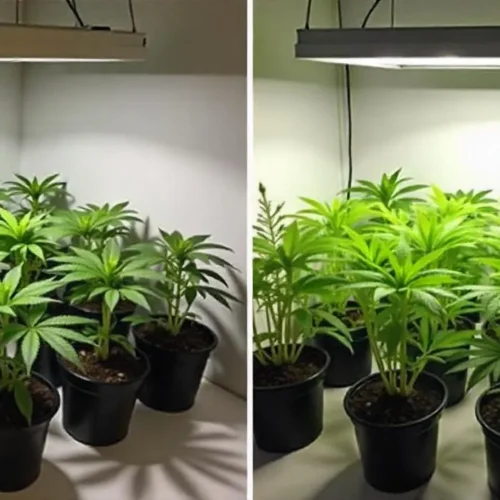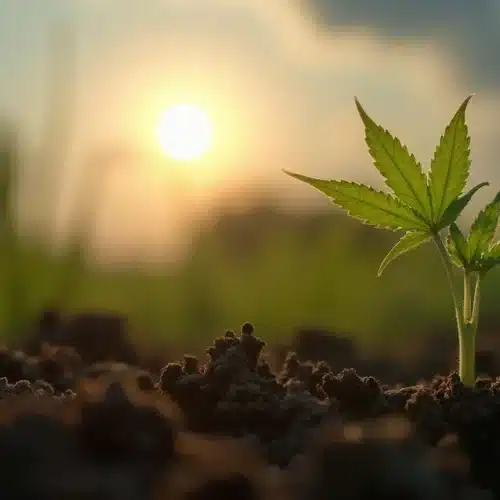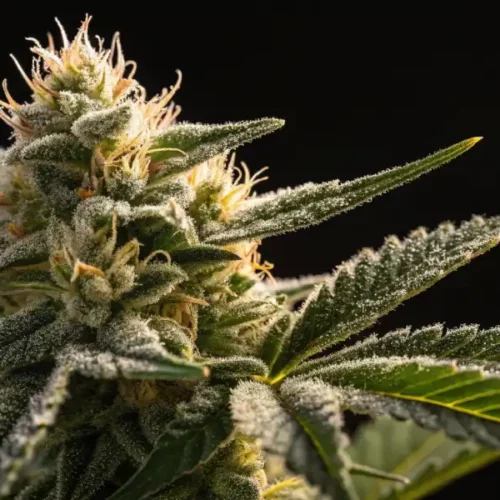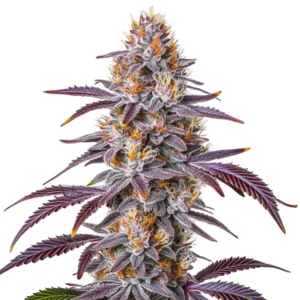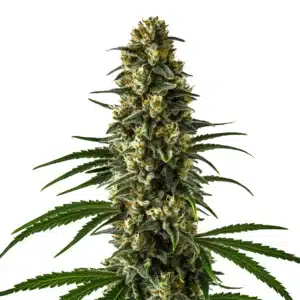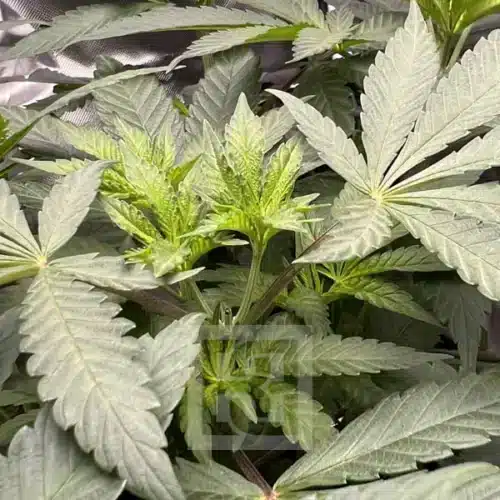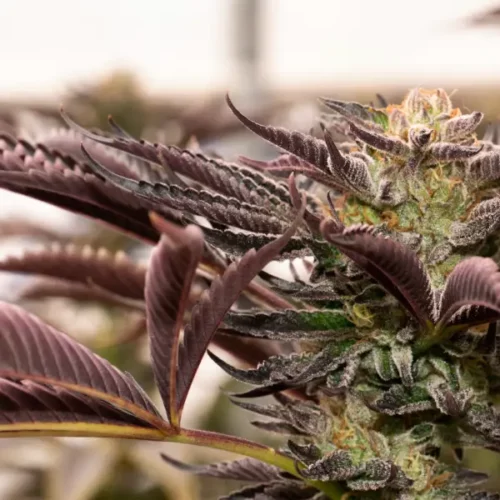Wombat Strain Cannabis Seed Description
The Wombat Strain is a highly sought-after cannabis strain known for its exceptional characteristics. This strain is the result of a careful crossbreeding process, combining the genetics of premium cannabis varieties to create a unique and potent hybrid.
This Strain plants typically produce robust and resinous buds with a range of enticing colors, including deep greens, purples, and oranges. These buds are covered in a thick layer of trichomes, making them visually appealing and potent.
Recommended Strains
Wombat
 THC: 18 - 20%
THC: 18 - 20% Type of seed: Feminized
Type of seed: Feminized Phenotype: Mostly Sativa
Phenotype: Mostly Sativa Day to flower: 8 - 10 weeks
Day to flower: 8 - 10 weeks
CBD Critical Mass (1:1)
 THC: 5%
THC: 5% Type of seed: CBD
Type of seed: CBD Phenotype: Mostly Indica
Phenotype: Mostly Indica Day to flower: 8 - 10 weeks
Day to flower: 8 - 10 weeks
One of the standout features of the Wombat Strain is its remarkable aroma and flavor profile. Users can expect a delightful combination of sweet, earthy, and fruity notes with hints of spice and citrus. The sensory experience offered by Wombat Strain is truly exceptional.
When it comes to THC percentage, this Strain is known for its high potency, often exceeding 20% THC content. This makes it a favorite among cannabis connoisseurs seeking a strong and long-lasting high.
In terms of yields, this Strain is considered a moderate to high-yielder when grown under optimal conditions. Its combination of potency and yield potential makes it an attractive choice for cultivators.
Promos & Deals
Environmental Requirements for Growing Marijuana
Creating the ideal environment for your this Strain plants is crucial to maximize their potential. The environmental requirements of this strain is key to successful cultivation.
This Strain thrives in a temperate climate, with daytime temperatures between 70-80°F (21-27°C) and slightly cooler nights. Maintaining stable temperature and humidity levels within the grow space is essential to prevent stress and potential issues such as mold or mildew.
For indoor cultivation, it’s recommended to use high-quality LED grow lights or HPS lamps to ensure proper photosynthesis and robust bud development. During the vegetative phase, provide 18-20 hours of light per day, then switch to a 12-hour light cycle to initiate flowering.
Outdoor growers should choose a location with ample sunlight and favorable climate conditions. Wombat Strain thrives in a sunny and warm environment, so select a suitable spot to allow it to reach its full potential. If you’re in a cooler climate, consider using a greenhouse or providing additional protection to extend the growing season.
Setting Up The Growing Cannabis Space
Before you start growing this Strain, ensure you have an efficient and well-organized growing space. Whether you choose indoor or outdoor cultivation, consider the following factors:
Indoor Cannabis Cultivation
For indoor cultivation, select the right grow tent or dedicated grow room. Make sure the space allows enough vertical room for the plants to grow and has proper ventilation to maintain fresh airflow. Install an efficient exhaust system with a carbon filter to control odors and manage heat and humidity. Use reflective materials or Mylar sheets to maximize light distribution and prevent light leaks during flowering.
Choose a suitable growing medium for this Strain, such as high-quality soil or a hydroponic system, based on your experience and preferences. Ensure proper drainage to prevent waterlogging and maintain a balanced pH level around 6.0-6.5 for optimal nutrient absorption.
Outdoor Cannabis Cultivation
When cultivating Wombat Strain outdoors, select a location with plenty of sunlight and suitable soil conditions. Ensure the soil is well-draining and rich in organic matter. Consider using large containers or fabric pots to maintain control over soil quality and root health. Protect your plants from strong winds with a fence or windbreaks.
Use stakes or trellises to support the branches of your this Strain plants, especially during the flowering phase. This prevents branches from bending or breaking under the weight of dense buds and promotes better airflow.
Propagation and Germination of Marijuana Seeds Wombat Strain
Successful germination and propagation are critical for healthy Wombat Strain plants. Follow these steps to ensure a high germination rate and successful propagation:
1. Start by selecting high-quality feminized Wombat Strain seeds from a reputable seed bank. This ensures genetic stability and the feminization of your plants.
2. Initiate the germination process by soaking the seeds in distilled water or a damp paper towel for 24-48 hours. Maintain a temperature between 70-85°F (21-29°C) and provide a dark, undisturbed environment.
3. Once the seeds have soaked and developed taproots, carefully transfer them to a pre-moistened growing medium, such as a seedling tray or small pots filled with a light and well-draining soil mix.
4. Place the seeds in a warm and humid environment with gentle airflow. Maintain a temperature around 75-80°F (24-27°C) and a humidity level of 60-70% for optimal germination.
5. Provide indirect light to the seedlings during the first few days, gradually increasing light intensity as they develop. Avoid exposing them to intense light or heat that could cause stress or damage.
6. Once the seedlings have grown a few sets of true leaves, they are ready for transplantation into larger pots or their final growing containers.
By following these germination and propagation steps, you can ensure a strong start for this Strain plants and establish a solid foundation for healthy growth and abundant yields.
Vegetative Phase of Cannabis seeds
The vegetative phase plays a crucial role in the development of your Wombat Strain plants. Here are key considerations during this phase:
Lighting: Provide this Strain plants with 18-20 hours of light per day to promote vigorous vegetative growth. High-quality LED grow lights or HPS lamps are recommended to ensure sufficient light intensity and spectral distribution.
Nutrition: During the vegetative phase, Wombat Strain plants require a balanced and nutrient-rich diet. Use a reputable cannabis fertilizer with a higher nitrogen (N) content to encourage healthy leaf and stem growth. Follow the manufacturer’s instructions and monitor the plants for any signs of nutrient deficiencies or excesses.
Watering: Water your plants when the top inch of the soil feels dry. Avoid overwatering, which can lead to root rot and other moisture-related issues. Allow the soil to dry out slightly between watering sessions, but ensure the plants do not experience extreme drought.
Training: Consider training techniques such as low-stress training (LST) or topping to control the height and shape of this Strain plants. These methods help create an even canopy, increase light penetration, and promote better bud development.
Pruning: Remove any lower branches or leaves that receive little light or show signs of disease or pests. This improves airflow and reduces the risk of mold or mildew formation.
By providing the right environmental conditions, nutrition, and care during the vegetative phase, you can establish healthy and robust Wombat Strain plants ready for the flowering stage.
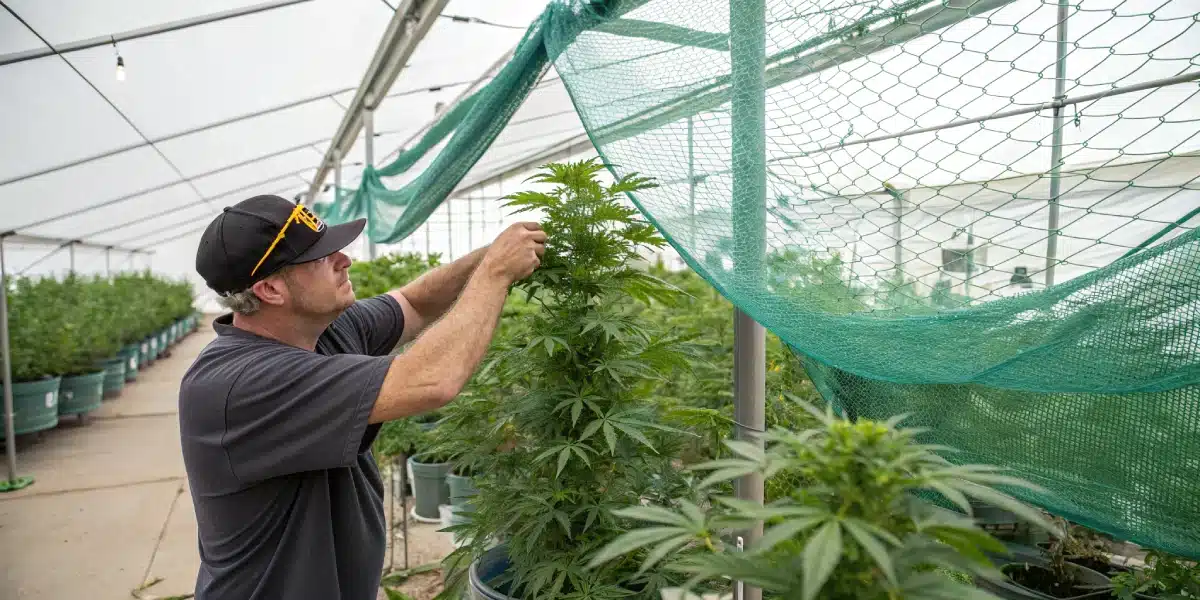
Flowering Phase of Marijuana Seeds Wombat Strain
The flowering phase is the most anticipated stage of growing this Strain, as it’s when the plants develop their characteristic buds. Here’s what you need to know:
Lighting: Adjust the light cycle to 12 hours of light and 12 hours of uninterrupted darkness to initiate the flowering phase. Use a timer to maintain a consistent light schedule. During this stage, Wombat Strain plants require intense light, so ensure your grow lights provide adequate coverage and maintain the appropriate distance from the canopy.
Nutrition: Transition from a nutrient formula higher in nitrogen to a bloom or flowering-specific nutrient formula. These formulations are generally higher in phosphorus (P) and potassium (K), which promote bud development and overall flowering performance. Monitor the plants closely and adjust nutrient levels as needed to avoid deficiencies or toxicities.
Temperature and Humidity: Maintain a slightly lower temperature during the flowering phase, ideally around 65-75°F (18-24°C), to encourage resin production and prevent heat-related stress. Aim for humidity levels around 40-50% to minimize the risk of mold or bud rot.
Support: As this Strain plants enter the flowering phase, the weight of the developing buds may cause branches to bend or break. Provide adequate support using stakes or trellises to ensure the plants can bear the weight and avoid bud damage.
Flowering Time: this Strain typically has a flowering time of 8-10 weeks, but this can vary depending on the specific phenotype and environmental conditions. Monitor trichome development using a magnifying tool to determine the optimal harvest window.
Throughout the flowering phase, keep a close eye out for any signs of pests or diseases. Implement proper pest management practices and take immediate action at the first sight of infestation or abnormalities.
Cannabis Fertilization and Nutrition
Proper nutrition and fertilization are crucial for maximizing the growth, yield, and overall health of this Strain plants. Consider the following tips:
Choosing the Right Fertilizer: Select a high-quality cannabis-specific fertilizer or nutrient line that provides a balanced blend of macro and micronutrients. Look for products rich in nitrogen (N), phosphorus (P), and potassium (K) to support healthy growth, root development, and bud formation.
Feeding Schedule: Follow the manufacturer’s instructions and adjust the feeding schedule based on your plants’ specific needs. Start with a lower concentration and gradually increase it as the plants progress through their growth stages. Monitor the plants closely for any signs of nutrient deficiencies or excesses and make adjustments accordingly.
Supplements and Additives: Consider incorporating supplements and additives into your feeding regimen to enhance specific aspects of plant development. These may include bloom boosters, beneficial microbes, enzymes, or organic amendments that improve soil structure and nutrient availability.
Regularly monitor your plants’ response to the feeding program, adjusting nutrient concentrations and frequencies as needed. Remember to flush the plants with pure water during the final weeks of the flowering phase to remove any excess salts or nutrients, which can affect the flavor and overall quality of the final harvest.
Pest And Disease Control for Cannabis Growing – Wombat Strain
While this Strain is known for its resilience, it is still susceptible to pests and diseases. Implementing proper pest and disease control measures is crucial to protect your plants and ensure a successful cultivation. Here are some preventive and corrective actions:
Prevention:
- Regularly inspect your plants for any signs of pests, such as spider mites, aphids, or thrips. Early detection is key to preventing a full-blown infestation.
- Maintain a clean and tidy growing space, removing any dead plant material or debris that could harbor pests or pathogens.
- Introduce beneficial insects, such as ladybugs or predatory mites, to your garden to help control pests naturally.
- Ensure proper airflow and ventilation in the growing space to reduce the risk of mold or mildew formation.
- Quarantine new plants or clones before introducing them into your growing area to prevent the spread of pests or diseases.
Corrective Actions:
- If you detect pests, use organic or low-toxicity pest control products specifically formulated for cannabis. Follow the instructions carefully and avoid using harsh chemicals that can compromise the quality of your harvest.
- For common fungal diseases like powdery mildew or botrytis, remove infected plant material, increase airflow, and consider using organic fungicides or natural remedies such as neem oil or a milk spray solution.
- When dealing with severe infestations or persistent pest issues, consider consulting with a professional cannabis cultivator or horticulturist who can provide tailored advice and solutions.
Harvesting and Curing for Cannabis Growing – Wombat Strain
Harvesting and curing are critical steps in the cultivation of this Strain cannabis to preserve the quality, flavor, and potency of the buds. Follow these guidelines for a successful harvest and curing process:
Harvest Timing: Determine the optimal harvest time by closely examining the trichomes on the buds. When trichomes appear milky or cloudy with some amber-colored ones, it’s usually the right time to harvest. Use a magnifying tool to inspect the trichomes for precise timing.
Harvesting: Carefully cut the branches with sharp pruning shears, leaving enough stem for handling. Trim away any large fan leaves that do not contain resin glands. Handle the buds gently to avoid damaging the delicate trichomes.
Trimming: After harvesting, trim away excess leaves and sugar leaves from the buds. This enhances the appearance and overall quality of the final product. Some growers prefer a “wet trim” immediately after harvest, while others opt for a “dry trim” after the drying phase.
Drying: Hang the trimmed branches in a dark and well-ventilated drying room with a temperature of around 60-70°F (15-21°C) and a humidity level of 45-55%. Maintain proper airflow to prevent mold or mildew. Drying can take 7-14 days, depending on environmental conditions and bud size. Buds are ready when the smaller stems snap instead of bend.
Curing: Place the dried buds in airtight glass jars, filling them about two-thirds full. Store the jars in a cool, dark place with a temperature of 60-70°F (15-21°C) and a humidity level of 55-65%. Burp the jars daily for the first two weeks to release excess moisture and prevent mold. After the initial curing period, continue curing for at least 4-8 weeks, occasionally burping the jars to maintain optimal humidity levels.
Monitoring: During the curing process, monitor the buds for any signs of mold or unusual odors. Properly cured buds will develop a rich aroma and smoother smoke.
By following these harvesting and curing steps, you can enhance the flavor and potency of this Strain buds, providing a premium product for consumption.
Wombat Strain: Indica or Sativa?
this Strain is a hybrid cannabis variety, which means it combines both indica and sativa genetics. The specific ratio of indica to sativa genetics can vary among different phenotypes and breeders. The effects and characteristics of Wombat Strain will depend on the precise genetic makeup of the plant you’re cultivating.
Typically, hybrid strains like this Strain offer a blend of indica and sativa traits. Indica-dominant phenotypes may provide relaxation and body effects, making them suitable for evening use or relaxation. Sativa-dominant phenotypes may offer more cerebral and uplifting effects, making them better suited for daytime activities.
It’s important to note that the effects of cannabis can also vary based on factors such as harvest timing, curing, and individual tolerance. To understand the specific effects of the Wombat Strain you’re growing, consider testing a small sample after curing to assess its unique characteristics.
Advantages of Growing Wombat Strain Cannabis Seeds
Growing Wombat Strain cannabis seeds offers several advantages for cultivators:
- Potent Buds: this Strain is known for its high THC content, providing a strong and long-lasting high.
- Unique Flavor and Aroma: The strain offers a delightful combination of sweet, earthy, fruity, and spicy notes, creating an exceptional sensory experience.
- Hybrid Versatility: Wombat Strain combines indica and sativa genetics, offering a balanced blend of effects suitable for various preferences and occasions.
- High-Yield Potential: Under optimal conditions, Wombat Strain can produce moderate to high yields of resinous buds.
- Cultivation Challenge: Growing this Strain can be a rewarding challenge for experienced cultivators looking to hone their skills and maximize their harvests.
These advantages make Wombat Strain an attractive choice for cannabis enthusiasts and growers seeking a premium cannabis experience.
Disadvantages of Growing Wombat Strain Cannabis Seeds
While Wombat Strain offers many benefits, it also comes with some potential disadvantages:
- High THC Content: The strain’s high THC content may be overwhelming for inexperienced or low-tolerance users, leading to adverse effects.
- Environmental Requirements: Maintaining the ideal growing environment for this Strain can be challenging, especially for beginners.
- Potential for Odor: Wombat Strain can produce a strong and distinctive odor during flowering, which may require odor control measures for indoor growers.
- Variable Effects: The effects of this Strain can vary depending on the specific phenotype, making it important to understand the characteristics of the plant you’re cultivating.
- Pest and Disease Susceptibility: Like all cannabis plants, this Strain is susceptible to pests and diseases, which can impact yield and quality if not properly managed.
It’s important for growers to weigh these potential disadvantages against the benefits and consider their experience level and cultivation goals when deciding to grow Wombat Strain cannabis seeds.
Why Buy Wombat Strain Marijuana Seeds
There are several reasons why you might consider buying this Strain marijuana seeds:
- Genetic Stability: Purchasing seeds from a reputable seed bank ensures genetic stability and the feminization of your plants, reducing the risk of unexpected issues during cultivation.
- Quality Assurance: Reputable seed banks often provide information on the genetic lineage, THC content, and expected characteristics of the seeds they sell, giving you confidence in your purchase.
- Phenotype Selection: By growing from seeds, you have the opportunity to explore different phenotypes of this Strain and select the one that best suits your preferences and objectives.
- Legal Compliance: Buying seeds from a legal and regulated source can help ensure that you are in compliance with local cannabis laws and regulations.
- Support and Resources: Many seed banks offer customer support and resources to assist growers, especially those new to cannabis cultivation.
When buying Wombat Strain marijuana seeds, research reputable seed banks, read customer reviews, and verify the legality of purchasing and cultivating cannabis seeds in your region.
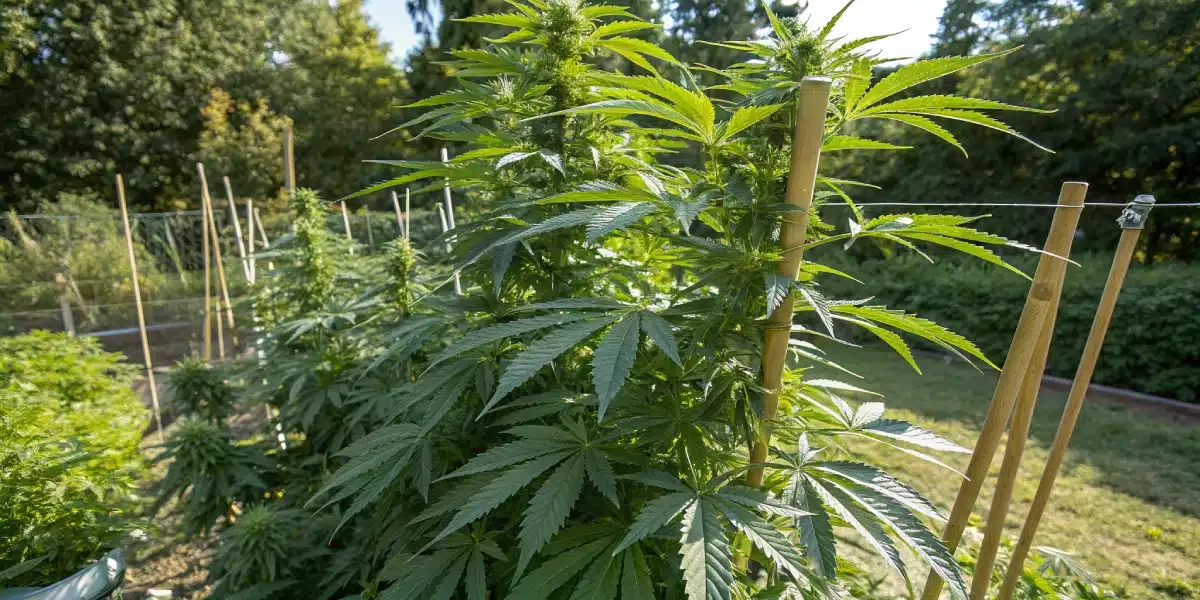
FAQs about Wombat Strain
What are the optimal environmental conditions for cultivating the Wombat strain?
The Wombat strain flourishes in temperate climates, with daytime temperatures ranging from 70-80°F (21-27°C) and slightly cooler nights. Maintaining stable temperature and humidity levels is essential to prevent plant stress and issues like mold or mildew. For indoor cultivation, high-quality LED grow lights or HPS lamps are recommended to support robust bud development. Outdoor growers should select sunny locations with favorable climates, considering greenhouses in cooler regions to extend the growing season.
How does the Wombat strain’s growth pattern affect indoor cultivation?
The Wombat strain exhibits vigorous growth, often reaching significant heights, which necessitates careful indoor space management. Implementing training techniques such as pruning and using ties can help control its size and promote better light penetration. Utilizing a Screen of Green (SCROG) setup is beneficial for managing its height and maximizing yields. Ensuring adequate vertical space and proper ventilation is crucial to accommodate its robust development and prevent overcrowding.
What are the expected yields and flowering time for the Wombat strain?
Under optimal conditions, the Wombat strain is known to produce substantial yields. Indoor cultivators can anticipate yields of approximately 600-700 grams per square meter, with a flowering period of about 60-65 days. Outdoor growers may expect to harvest in the first half of October, with each plant yielding around 21-24 ounces (600-700 grams). These figures can vary based on environmental factors and cultivation practices, so providing ideal conditions is key to maximizing output.

